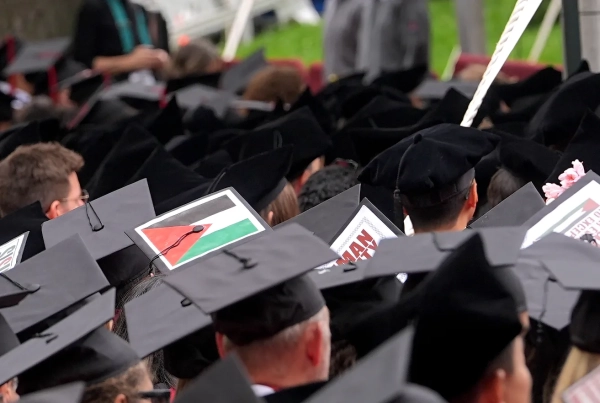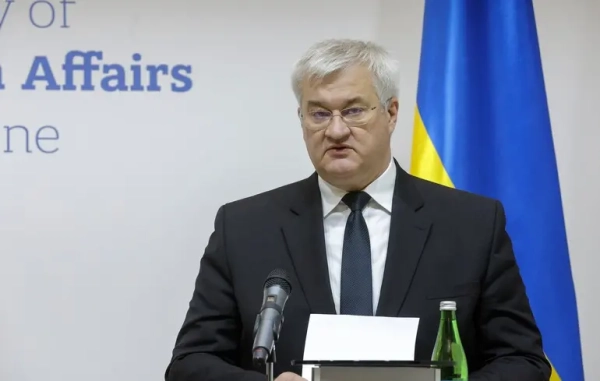“`html 
For a large part of the 20th century, the epicenter of science resided outside the US. Approaching World War II, the most prominent labs existed in Europe, with American research considered by many to lag behind, notably in physics.
Good News
A regular delivery of stories detailing advancement across the globe.
Email (required)Sign UpBy submitting your email, you agree to our Terms and Privacy Notice. This site is protected by reCAPTCHA and the Google Privacy Policy and Terms of Service apply.
Then, the “scientific migration” occurred: Overseas refugees escaping fascism — such as Einstein, Fermi, Bethe, Szilard, von Neumann, among others — reconstructed US science. A key factor in our victory in the war was America’s acquisition of global talent while its adversaries banished it. Subsequently, Washington cemented that advantage after the war by establishing Vannevar Bush’s concept of federally supported university science, transforming the nation into a scientific powerhouse and utilizing the entire world as its talent resource.
Related
- The self-inflicted demise of American science has already commenced
Presently, eight decades later, the US has begun constricting that supply. In June, the Trump administration put on hold or limited visas from 19 nations, directly impacting student and exchange categories. Earlier this spring, they even nullified thousands of student SEVIS records — the formal Department of Homeland Security status records for overseas students — before reversing their decision due to legal challenges. Arrival records for August revealed an approximate 19 percent year-over-year decrease in the number of new foreign student entries. This constituted the largest non-pandemic reduction recorded, even as surveys indicated top researchers planning mass departures from the US.
For an economy predicated on scientific advancement, this is an unparalleled act of self-sabotage.
Related
- America faces an innovation challenge. The H-1B visa logjam is worsening the situation.
Therefore, here’s the (tempered) positive news: Despite the apparent efforts of the Trump administration, recent federal data reported by Nature suggests that international PhD numbers remain nearly consistent year over year. Although not a resounding success, it avoids the collapse many predicted — at least for now — providing time to organize the political opposition required to sustain America’s foreign talent apparatus.
A robust system… for now
It is vital to recognize that, within the domains propelling technological advancement — computer science, engineering, math — international students represent a significant proportion; indeed, they constitute the majority of recent US PhDs. In 2023, temporary visa holders secured 62 percent of doctorates in computer and information sciences, 56 percent of engineering PhDs, and 53 percent of doctorates in math and statistics.
And contrary to assertions that the US is simply educating foreign students before they export their skills, a large contingent of these researchers remain. Approximately three-quarters of foreign science and engineering PhDs from the 2017–2019 cohorts were still residing in the US five years afterward. Maintaining the flow guarantees the US retains the labs, funding, and entrepreneurial environment that depend on their activity. Curtailing it will manifest as a decline in capabilities, not merely headcount.
Perhaps you are under the assumption that restricting foreign students will result in more positions for American-born applicants. However, our supply of these candidates is insufficient.
Even though an increasing number of US citizens and permanent residents have been pursuing and acquiring degrees in science, technology, engineering, and mathematics (STEM) over the last decade, the increase in graduate degrees has been erratic, encompassing a 3 percent year-over-year decrease in 2022. A disproportionate number of American students are ill-equipped to occupy these roles. 15-year-olds in the US performed below 25 other international education systems in math, with merely 15 percent of ACT-tested high school graduates fulfilling the standardized test’s STEM preparedness standard in 2023.
Were every foreign student in STEM to depart the US tomorrow, our STEM sector would be critically depleted. Contrast this with China, which is already producing nearly twice the quantity of STEM PhDs as the US, achieving this almost exclusively with domestic talent. Certainly, China’s population is four times greater; this is precisely the consideration. To compete, America must leverage more than solely its own national resources.
Made in the USA
The subsequent benefits of global scientific talent are observable wherever innovation is specifically assessed. Immigrants generate around 23 percent of US patents — far exceeding their demographic proportion — and their patents exhibit at least equivalent influence when evaluated by citations and market valuation.
These discoveries convert into economic success. Forty-six percent of companies currently in the Fortune 500 were established by an immigrant or their descendant. Within the startup landscape, immigrants have launched 55 percent of US “unicorns” (startups valued at over a billion dollars), with a significant portion of leading private AI firms having at least one immigrant founder. A substantial fraction of these founders initially arrived as overseas students. The nation’s most vibrant industries — semiconductors, AI, biotech — are the ones most reliant on global proficiency. Consider Jensen Huang, the Taiwanese-born founder of AI chipmaker Nvidia, who came to the US as a child of 9 and presently leads the most highly valued company worldwide.
The same model emerges at the pinnacle of scientific achievement. Since 2000, immigrants have garnered around 40 percent of the Nobel Prizes granted to Americans in the fields of physics, chemistry, and physiology or medicine. This year, both Jordan-born Omar Mwannes Yaghi, who relocated to the US at the age of 9, and Netherlands-born Joel Mokyr, who immigrated to America as a graduate student, augmented this roster. These accomplishments are not accidental; they are the consequence of a research ecosystem that reliably draws and maintains the world’s finest minds.
Therefore, the ongoing stability of international student enrollment offers reassurance — contingent upon capitalizing on this state. The United States ascended to the status of a scientific superpower by establishing premier laboratories and upholding open entry to individuals aspiring to collaborate within them. Provided we honor that pledge — consistent study-to-work pathways, dependable visa processing, avoidance of abrupt regulatory shifts — evidence indicates that these researchers will arrive, contribute disproportionately to scientific innovations and nascent business enterprises, and, frequently, remain.
Conversely, the resulting setbacks will be evident precisely where they can be afforded the least: a reduction in grant-winning teams, pioneering patents, advanced tech startups, award recipients, and the transition of the country from a position of leadership to one of followership.
A prior iteration of this article originally appeared in the Good News bulletin. Subscribe here!
“`
Source: vox.com






